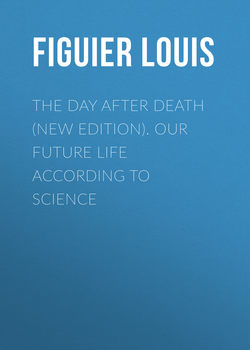Читать книгу The Day After Death (New Edition). Our Future Life According to Science - Figuier Louis - Страница 2
CHAPTER THE FIRST
ОглавлениеMAN THE RESULT OF THE TRIPLE ALLIANCE OF THE BODY, THE SOUL, AND THE LIFE. WHAT CONSTITUTES DEATH
BARTHEZ, Lordat, and the Medical School of Montpellier have created the doctrine of the human aggregate, which, in our opinion, affords the only explanation of the true nature of man. This doctrine of which we shall avail ourselves, as a guide in the earlier portions of this work, may be defined as follows:—
There exists in man three elements:—
1. The body, or the material substance.
2. The Life, or as Barthez calls it, the Vital Force.
3. The Soul, or as Lordat calls it, the Intimate Sense.
We must not confound the soul with the life, as the materialists and certain shallow philosophers have done. The soul and the life are essentially distinct. The life is perishable, while the soul is immortal; the life is a temporary condition, destined to decline and destruction; while the soul is impervious to every ill, and escapes from death. Life, like heat and electricity, is a force engendered by certain causes; after having had its commencement, it has its termination, which is altogether final. The soul, on the contrary, has no end.
Man may be defined as a perfected soul dwelling in a living body.
This definition permits us to specify what it is that constitutes death.
Death is the separation of the soul and the body. This separation is effected when the body has ceased to be animated by the life.
Plants and animals cannot live except under certain conditions: plants in the air or in the water, animals in the air, fish in the water; and if they are deprived of these conditions, they perish immediately. Again, there are existences which require special conditions for their support within the general ones.
Certain polypoid-worms can live only in carbonic acid, or azotic gas; the germs of cryptogams produced by damp can be developed only in aqueous infusions of vegetable matters; the fish which live in the sea, die in fresh, or only moderately salt, water.
Every living being has then its special habitat. The soul does not form an exception to this rule. The place, the habitat of the soul is a living body. The soul disappears from the body when this body ceases to live, just as a man forsakes a house when that house has been destroyed by fire.
Such is the doctrine of the triple alliance of the body, the soul, and the life, as formulated by the School of Montpellier, and such, as a consequence of this doctrine, is the mechanism of death.
It must be added that this triple alliance of the body, the soul, and the life, is not peculiar to man; it exists also in all animals. The animal has also a living body, and soul; but the soul in animals is much inferior to the soul in men, in the number and extent of its faculties. Having few wants, the animal has a very small number of faculties, which are all in a rudimentary condition. It is only in the very considerable development of the faculties of the soul that man differs from the superior animals, to which he bears a strong resemblance in his physiological functions, and his anatomical structure.
It must be remarked that the Montpellier School does not admit this view of the condition of animals. In another part of this work,1 a fuller explanation of the distinctions which divide man from animal will be found.
1
Ch. XV.
